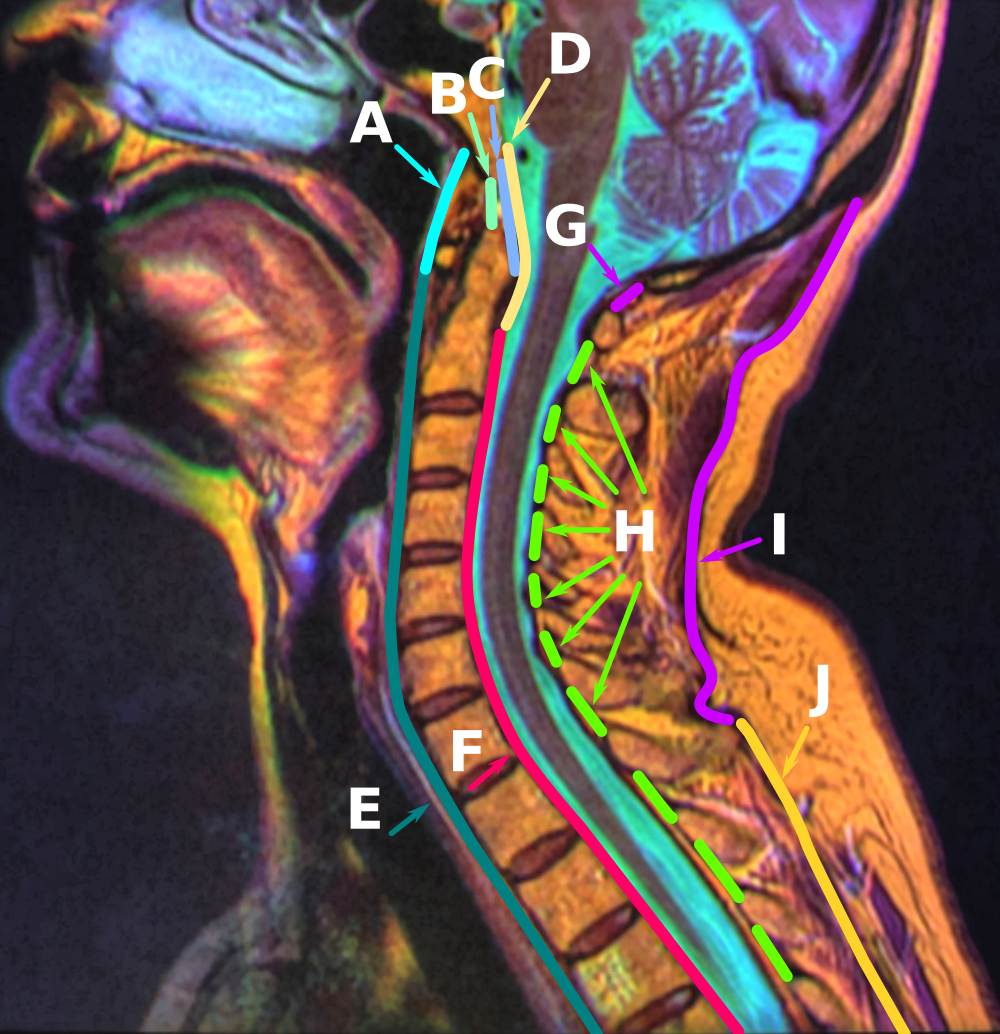supraspinous ligament on:
[Wikipedia]
[Google]
[Amazon]
The supraspinous ligament, also known as the supraspinal ligament, is a
 Between the spinous processes it is continuous with the
Between the spinous processes it is continuous with the
ligament
A ligament is the fibrous connective tissue that connects bones to other bones. It is also known as ''articular ligament'', ''articular larua'', ''fibrous ligament'', or ''true ligament''. Other ligaments in the body include the:
* Peritoneal li ...
found along the vertebral column
The vertebral column, also known as the backbone or spine, is part of the axial skeleton. The vertebral column is the defining characteristic of a vertebrate in which the notochord (a flexible rod of uniform composition) found in all chordata, ...
.
Structure
The supraspinous ligament connects the tips of thespinous process
The spinal column, a defining synapomorphy shared by nearly all vertebrates, Hagfish are believed to have secondarily lost their spinal column is a moderately flexible series of vertebrae (singular vertebra), each constituting a characteristic ...
es from the seventh cervical vertebra
In tetrapods, cervical vertebrae (singular: vertebra) are the vertebrae of the neck, immediately below the skull. Truncal vertebrae (divided into thoracic and lumbar vertebrae in mammals) lie caudal (toward the tail) of cervical vertebrae. In sa ...
to the sacrum
The sacrum (plural: ''sacra'' or ''sacrums''), in human anatomy, is a large, triangular bone at the base of the spine that forms by the fusing of the sacral vertebrae (S1S5) between ages 18 and 30.
The sacrum situates at the upper, back part ...
. Above the seventh cervical vertebra, the supraspinous ligament is continuous with the nuchal ligament
The nuchal ligament is a ligament at the back of the neck that is continuous with the supraspinous ligament.
Structure
The nuchal ligament extends from the external occipital protuberance on the skull and median nuchal line to the spinous proc ...
.
 Between the spinous processes it is continuous with the
Between the spinous processes it is continuous with the interspinous ligaments
The interspinous ligaments (interspinal ligaments) are thin and membranous ligaments, that connect adjoining spinous processes of the vertebra in the spine.
They extend from the root to the apex of each spinous process. They meet the ligamenta fl ...
.
It is thicker and broader in the lumbar than in the thoracic region, and intimately blended, in both situations, with the neighboring fascia.
The most superficial fibers of this ligament extend over three or four vertebrae; those more deeply seated pass between two or three vertebrae while the deepest connect the spinous processes of neighboring vertebrae.
Development
Function
The supraspinous ligament, along with the posterior longitudinal ligament, interspinous ligaments and ligamentum flavum, help to limit hyperflexion of the vertebral column.Clinical significance
Lesions to the supraspinous ligament may result inpalpable
Palpation is the process of using one's hands to check the body, especially while perceiving/diagnosing a disease or illness. Usually performed by a health care practitioner, it is the process of feeling an object in or on the body to determin ...
thickening
A thickening agent or thickener is a substance which can increase the viscosity of a liquid without substantially changing its other properties. Edible thickeners are commonly used to thicken sauces, soups, and puddings without altering thei ...
. Ultrasound is effective for detecting lesions. A strain injury can also damage the supraspinous ligament.
The supraspinous ligament creates resistance during midline epidural anaesthetics when the needle is being inserted. This increased resistance needs to be taken into account, and is one of the first subcutaneous tissues.
See also
References
{{Authority control Ligaments of the torso Bones of the vertebral column Ligaments